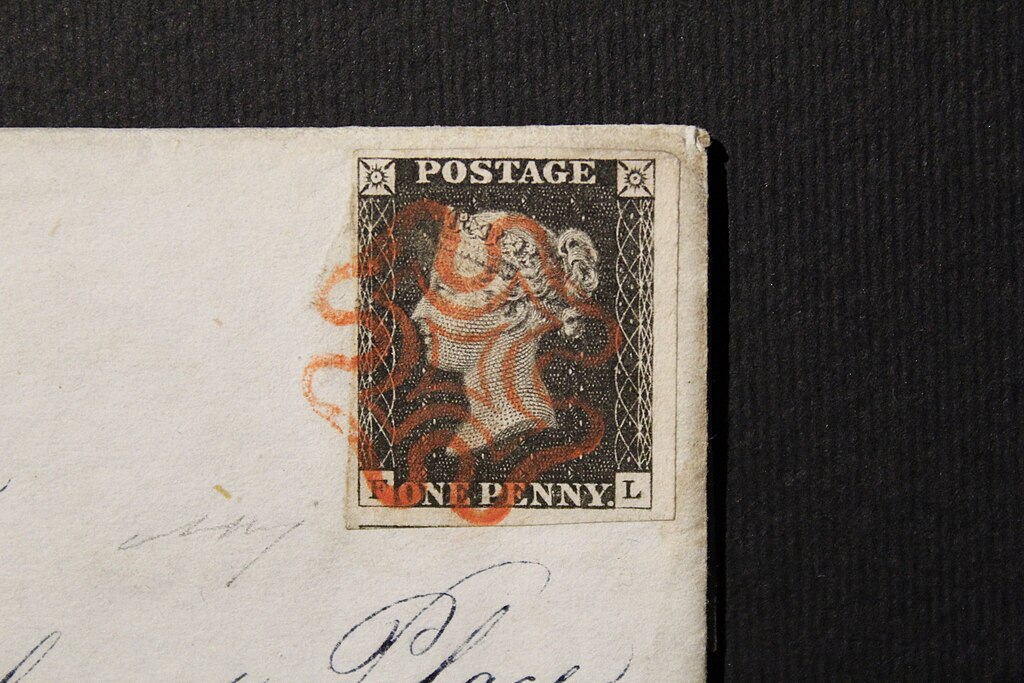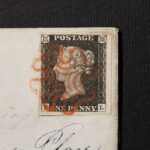 Museo dei Tasso e della storia postale, CC0, via Wikimedia Commons
Museo dei Tasso e della storia postale, CC0, via Wikimedia CommonsThe Victorians get a lot of credit for steam engines, railways, and top hats, but they also gave us a surprising number of everyday inventions that we rarely stop to think about. These weren’t just flashy innovations. They were practical, forward-thinking ideas that quietly became part of our routines. Here are some Victorian-era creations that are still firmly embedded in daily life, even if you don’t always realise it.
The postage stamp
Introduced in 1840 with the Penny Black, the postage stamp revolutionised communication. Before this, the cost of sending a letter was usually paid by the recipient, and prices were inconsistent and confusing. The idea of a prepaid stamp made things simpler, fairer, and faster, and it didn’t take long for the rest of the world to follow suit.
We might rely on emails and messages now, but stamps are still going strong for parcels, greetings cards, and anything that can’t be sent digitally. The basic concept remains unchanged, and it all started in Victorian Britain. It also laid the foundation for global postal systems and helped encourage literacy, since written communication suddenly became more accessible to ordinary people.
Public flushing toilets
The idea of public conveniences might not seem glamorous, but it was genuinely transformative. The first public flushing toilets appeared at the Great Exhibition of 1851, and they were a huge hit. For a penny, visitors could enjoy a clean, efficient loo—a novelty at the time.
These facilities helped shape public health standards and led to the wider adoption of plumbing systems in homes. They also became part of the urban infrastructure, influencing everything from public sanitation policies to city planning. Today, we take them for granted, but every time you nip to a public toilet in a shopping centre or station, you’re benefitting from Victorian ingenuity.
The bicycle
While early forms of bicycles existed before the Victorian era, it was during this period that they became practical and widely used. The 1880s saw the development of the safety bicycle, with two equal-sized wheels and a chain drive—basically the template for modern bikes.
Cycling exploded in popularity, especially among women, who saw it as a form of freedom and independence. It gave people from all walks of life affordable mobility. Today, bikes are everywhere, from city commutes to countryside rides, and the Victorian version is still the one we use. The popularity of bikes also helped push for better road surfaces, which benefitted other forms of transport too.
The lightbulb (sort of)
Thomas Edison tends to get the glory, but British inventor Joseph Swan was developing a working lightbulb around the same time. In fact, Swan lit his house in Gateshead with electric light in the late 1870s, years before Edison’s bulb took off commercially.
The legal battles between the two were complicated, but both contributed to what would become a world-changing invention. Swan even worked with Edison eventually, forming a joint company in Britain. Every time you flick on a light switch, you’re tapping into an idea that started glowing in the Victorian era and lit the way for modern electrical infrastructure.
Traffic lights
The very first traffic lights were installed outside the Houses of Parliament in 1868. They were gas-powered, manually operated, and looked more like railway signals than anything you’d see today. Still, the aim was the same: to control the chaos of growing city traffic.
Although that original model exploded after just a few weeks, the concept stuck. Victorian traffic lights may have been short-lived, but they were a direct response to a world adapting to industrialisation. Modern traffic systems, including pedestrian crossings and smart lights, owe their existence to this early experiment in managing movement.
Underground railways
London’s first underground railway opened in 1863. It ran steam trains through tunnels and quickly changed how people moved around the city. It was dirty, loud, and often full of soot, but it was also faster than anything above ground.
The idea of mass transit running below street level was so effective that cities around the world copied it. Today, millions of people ride underground rail daily, and some of the original Victorian tunnels are still in service. The concept was radical at the time but has since become a vital part of urban life.
The telephone
Alexander Graham Bell made the first successful telephone call in 1876, and it changed everything. Suddenly, you could hear someone’s voice from miles away without leaving your chair. The early models were clunky and limited, but the idea stuck.
We’ve gone from switchboards to smartphones, but the basic principle remains. The Victorian invention of the telephone was the start of a revolution in communication that we’re still living through today. It reshaped business, government, and personal relationships, setting the stage for the connected world we know now.
Typewriters
Typewriters first became commercially viable in the 1870s. They offered a faster, more legible alternative to handwriting and were quickly adopted in offices and publishing. The QWERTY layout we still use was born out of these early machines.
Even though computers and tablets have replaced typewriters, their legacy is everywhere, from the way we type to how our keyboards are arranged. You’re using a Victorian-inspired tool every time you send an email or type a document. They also changed who got to work in offices—women entered clerical roles in large numbers thanks to the typewriter.
Refrigeration
The Victorians didn’t invent refrigeration from scratch, but they brought it into homes and made it useful. Ice houses and early mechanical systems allowed food to be stored for longer, which was revolutionary at a time when spoilage was a constant problem.
These innovations helped shift how people cooked, shopped, and ate. We now have sleek fridge-freezers, but the idea of keeping food cold and safe was one the Victorians embraced first. Their early experiments led directly to the chilled convenience we rely on today.
The vacuum cleaner
The first powered vacuum cleaner was patented by Hubert Cecil Booth in 1901, right at the tail end of the Victorian era. His machine was huge, so big it had to be drawn by horses and parked outside homes, with long hoses fed through the windows.
It wasn’t exactly practical for the average family, but the idea quickly evolved. Smaller, more manageable machines followed, and today, the concept of electric cleaning is standard in every household. Booth’s invention laid the groundwork for the Hoover, the Dyson, and every robot vacuum zipping around your lounge.
The importance of these inventions
These ideas might feel old-fashioned on the surface, but they underpin a lot of the tech and convenience we lean on every day. The Victorians weren’t just inventing for show—they were solving real problems with clever, durable solutions. Their innovations have proven incredibly adaptable, surviving generations of change without losing their relevance.
Next time you use your phone, hop on a bike, or stick a stamp on a birthday card, you’re taking part in a much longer story than you might realise. Victorian inventions aren’t relics. They’re the invisible architecture behind modern life.



